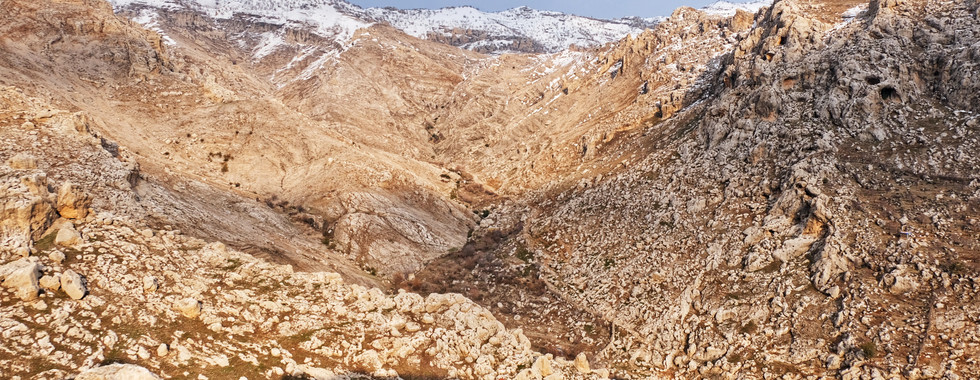The red Akre sun
- Bruno

- Nov 17, 2022
- 3 min read
Since snowfall limited our ability to explore around Iraqi Kurdistan, we linked up with Jagar (@jagar_amen) to visit Lalish (don't miss out on that story!) and his home town of Akre.

Though we did know a little about Lalish, Akre was quite a mistery to us...
Tucked away in sleepy mountains north of Erbil, Akre may not seem like a notable place to visit at first glance but trust us, it definitely is!
The first thing which pleasantly surprised us was the local cuisine. Jagar told us that people from all over Kurdistan go there to enjoy the food and he made sure we went to his favorite spot. Knowing how the Kurds love their food, we took this seriously and made sure we went there for lunch! Upon arrival we tried the local favorite Qalya, a pot cooked meat dish filled with all sorts of delicious spices! Oooh the taste buds salivate at the memory...
Satisfied after lunch and by that time having also visited Lalish, we went for a walk through the city.
Walking through hilly Akre we saw and heard about both the Christian and Jewish communities that had once lived there and were reminded on how diverse and complex this entire region has always been.
In just this one small city, at different points in time, communities from multiple different major religions have been the majority and prospered in their own way. Ethnicities and cultures have come and gone and yet the everyday folk have had to find ways to persevere and co-exist as Akre residents. Here, as in many other places, many might summon historical reasons to claim this land as their own but in reality it belongs to them: the Akre people that through the centuries withstood the unthinkable and remained.
On that, we then went on to visit an abandoned building which used to be a prison during the regime of Saddam Hussein. A semi-ruined monument to an age that seems like it was only a moment ago and that, for the atrocities it may have witnessed, offers an incredible rooftop view to visitors who are bold enough to visit it.

Admittedly, visiting this old prison was a thought inspiring experience.
Though I was young, I remember the Gulf War and all of the media follow up to what was going on at the time. I remember how Saddam Hussein was painted as an evil tyrant that oppressed his people and how something had to be done. This abandoned building was a reminder that indeed many suffered at his hands and that the international rejoice that followed that was no doubt justified.
The burning flare at an oil field near Lalish earlier in the day though, reminded me that nothing here is simple and that often righteousness is the mask of the greedy for money and power. That though Saddam was a brutal dictator, he did manage to keep a relative amount of stability in a region that exploded into violence and tribalism (despite "international supervision") as soon as he was gone.
Filled with conflicting thoughts on the historical meaning and beauty of the place we had visited, we continued trekking up the city and eventually made our way into the hills which overlook it.
The trek itself is only mildly challenging and the path is kept in good condition as tourists and locals often venture up the hill to appreciate the incredible views of the surrounding area.
With almost nobody there, bare rocky and snowy hills around us and Akre at our footsteps, we somehow felt a kind of peace and quiet that we had been missing for a long time. This is a place of contemplation and we made sure to take our time taking in our surroundings and just being alone with ourselves. Simply being there.
During Nowruz, the first day of spring and the Iranian new year, Akre and these hills become a place of celebration filled with candles and fireworks that welcome in a New Year, a new day.
Alas, this day had to come to an end and before heading back to Erbil we made sure to appreciate the famous Akre red sun that bid us farewell.

























































Comments